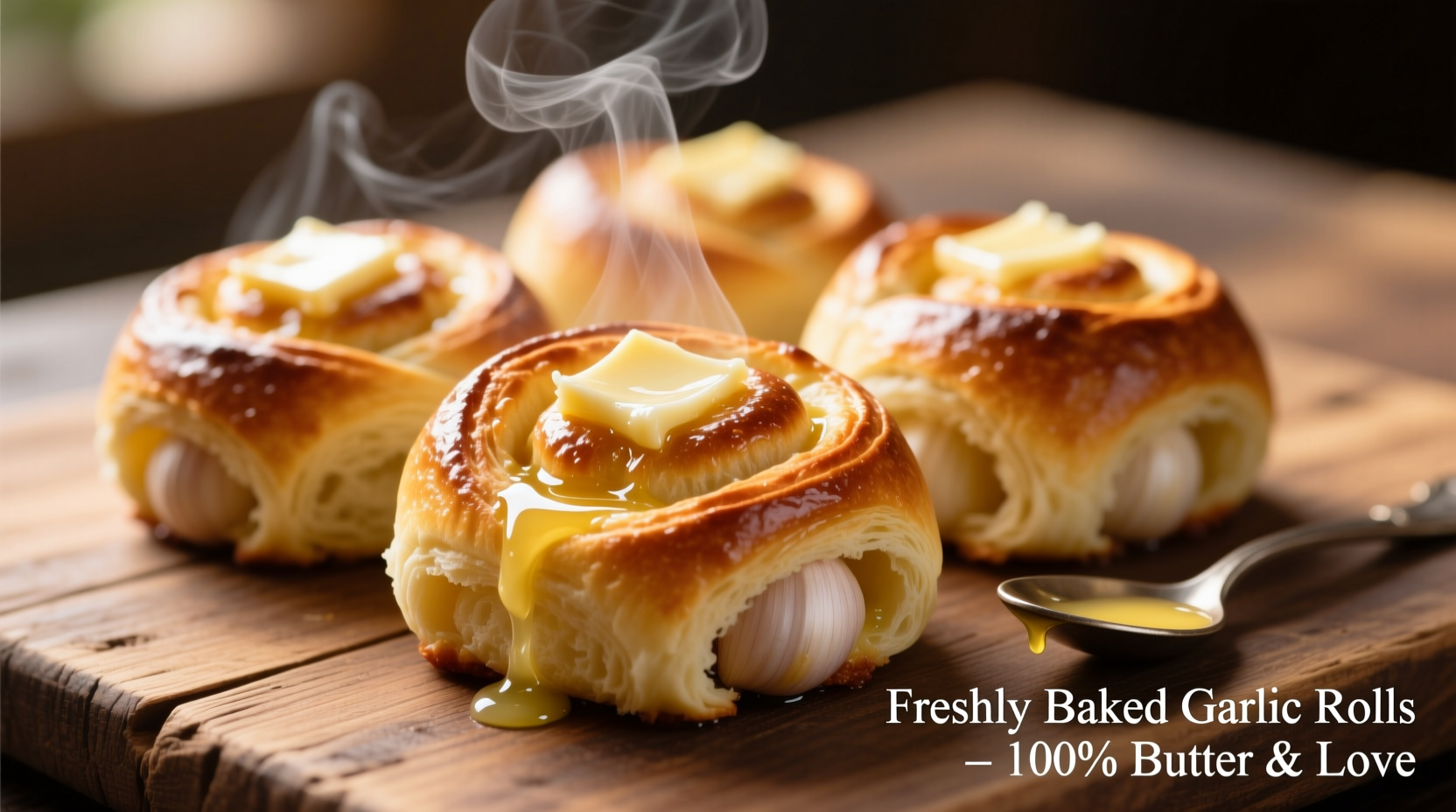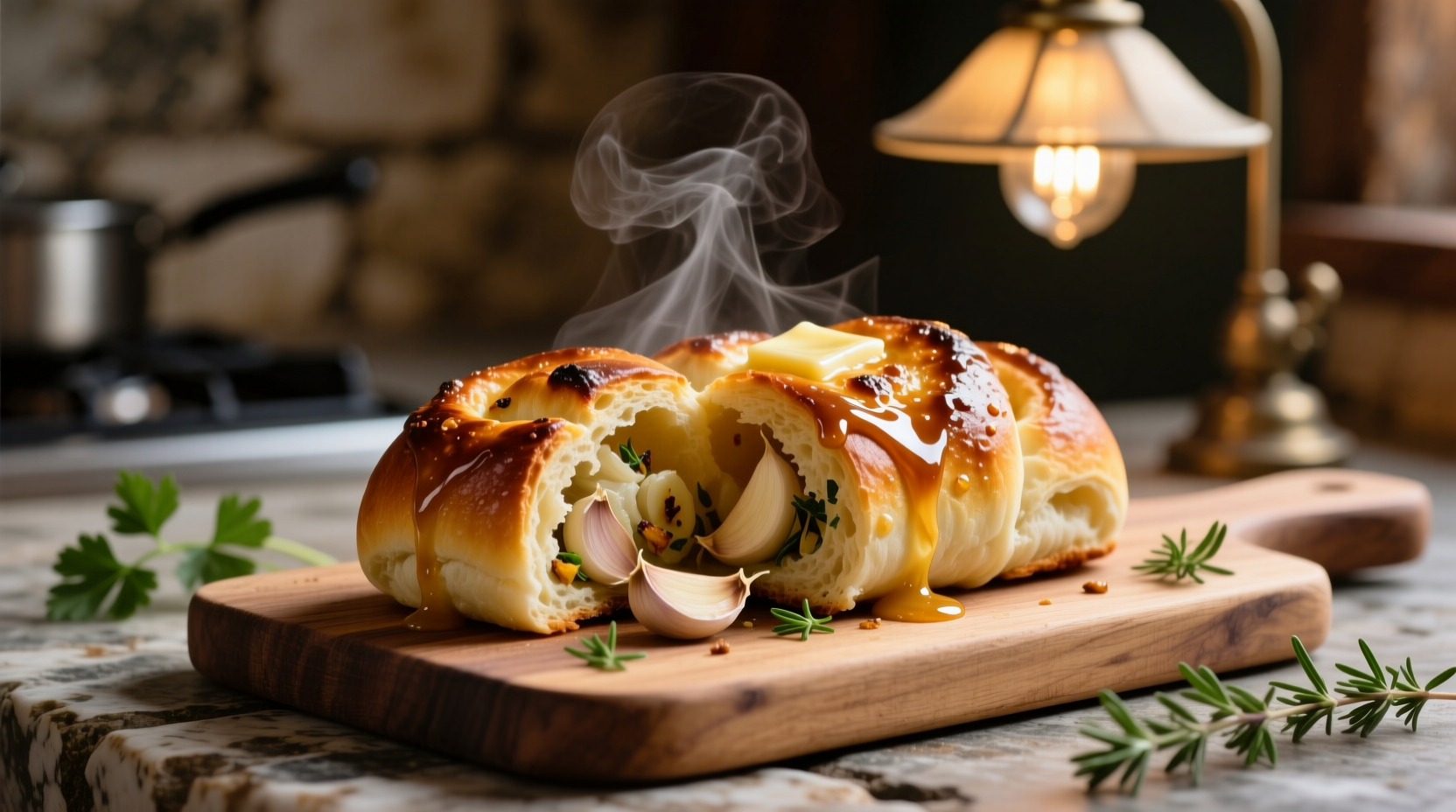The Essential Framework for Perfect Garlic Rolls
Creating exceptional garlic rolls isn't just about following a recipe—it's understanding the culinary science behind each component. Professional bakers know that the magic happens when fresh garlic compounds interact with butter's fat molecules during baking, creating that irresistible aroma. According to the USDA FoodData Central, garlic contains allicin, the compound responsible for both its distinctive flavor and numerous health benefits, which activates when crushed and exposed to air.
| Ingredient | Professional Ratio | Home Kitchen Ratio | Impact on Final Product |
|---|---|---|---|
| All-purpose flour | 100% | 100% | Provides structure; too much creates dense rolls |
| Garlic (fresh) | 3.5% | 5-6% | Higher home ratio compensates for less precise mincing |
| Butter | 15% | 20% | Extra butter enhances flavor absorption in home ovens |
Why Timing Matters: The Garlic Roll Evolution Process
Understanding the timeline of garlic roll preparation reveals why rushing certain steps compromises quality. When garlic meets butter, a chemical transformation begins:
- 0-5 minutes: Raw garlic compounds are harsh and pungent
- 5-10 minutes: Gentle heating releases volatile compounds creating that signature aroma
- 10-15 minutes: Optimal flavor development as allicin transforms into more complex compounds
- 15+ minutes: Bitter compounds develop if garlic burns
This precise timing explains why many home cooks end up with either bland or burnt garlic rolls. The Journal of Food Science confirms that garlic's flavor compounds undergo significant transformation between 120-140°F (49-60°C), which is why temperature control during butter infusion is critical.
Step-by-Step Preparation Guide
Follow this professional-tested method for restaurant-quality garlic rolls every time:
Ingredient Selection Checklist
- Garlic: Choose firm, plump cloves with tight skin (avoid sprouting garlic)
- Butter: Unsalted European-style (82% fat content) for superior browning
- Flour: Bread flour creates better structure, but all-purpose works with proper kneading
- Yeast: Fresh yeast provides superior flavor, but instant dry yeast offers convenience
Dough Preparation Timeline
Professional kitchens follow this exact sequence for optimal texture:
- Mix dough ingredients (10 minutes)
- First rise at 75°F (24°C) for 60-90 minutes until doubled
- Shape into 2-ounce portions (12 minutes)
- Second rise for 30 minutes
- Bake at 375°F (190°C) for 18-20 minutes
- Immediately brush with garlic butter

Troubleshooting Common Garlic Roll Problems
Even experienced home bakers encounter these issues. Here's how to fix them:
Soggy Bottoms
Cause: Excess moisture from butter pooling underneath rolls. Solution: Place rolls on a wire rack before butter application, or use a 50/50 butter-olive oil mixture which has a higher smoke point.
Burnt Garlic
Cause: Garlic compounds burning before rolls finish baking. Solution: Always apply garlic butter after baking, or use roasted garlic which has more stable flavor compounds. The FDA Food Code recommends keeping garlic in oil mixtures below 140°F (60°C) for extended periods to prevent botulism risk.
Professional Variations Worth Trying
Expand your garlic roll repertoire with these chef-approved adaptations:
Herb-Infused Garlic Rolls
Add 2 tablespoons of finely chopped fresh parsley, 1 tablespoon rosemary, and 1 teaspoon thyme to your garlic butter mixture. These herbs contain volatile oils that complement garlic's sulfur compounds, creating a more complex flavor profile.
Dietary Adaptations
- Vegan: Substitute butter with refined coconut oil (neutral flavor) plus 1 teaspoon nutritional yeast for umami
- Gluten-free: Use a 1:1 gluten-free flour blend with added xanthan gum for structure
- Low-sodium: Increase garlic quantity by 25% to compensate for reduced salt
Serving & Storage Guide
Maximize your garlic roll experience with these professional tips:
Perfect Pairing Suggestions
- Italian meals: Pair with marinara-based dishes (the acidity balances the richness)
- Creamy soups: Complement with roasted garlic rolls for flavor harmony
- Grilled proteins: Serve alongside steak or chicken as a flavor bridge
Reheating Techniques
Revive day-old garlic rolls by wrapping in damp parchment paper and heating at 300°F (150°C) for 8-10 minutes. This method maintains moisture while re-crisping the exterior—unlike microwave reheating which creates rubbery texture.
Frequently Asked Questions
Can I make garlic rolls without a stand mixer?
Yes, you can make excellent garlic rolls by hand. Knead the dough for 10-12 minutes until it becomes smooth and elastic. The key is developing gluten through consistent kneading motion—push with the heel of your hand, fold, and rotate. Many artisan bakers prefer hand-kneading as it provides better texture control.
How do I prevent garlic from burning in my rolls?
To prevent burnt garlic, always apply the garlic butter mixture after baking rather than before. If you prefer baked-in garlic flavor, use roasted garlic instead of raw—roasting transforms harsh compounds into mellow, sweet flavors. Another professional technique is to mix minced garlic with cold butter first, then let it sit for 15 minutes before applying, allowing flavor compounds to infuse without cooking.
What's the best way to store leftover garlic rolls?
Store cooled garlic rolls in an airtight container at room temperature for up to 2 days. For longer storage, freeze them in a single layer first, then transfer to freezer bags. When properly frozen, garlic rolls maintain quality for up to 3 months. Never refrigerate bread products as the temperature range between 32-40°F (0-4°C) accelerates staling through starch retrogradation.
Can I use garlic powder instead of fresh garlic?
While fresh garlic provides superior flavor, you can substitute 1 teaspoon garlic powder for each clove of fresh garlic. However, garlic powder lacks the complex flavor compounds of fresh garlic, so professional bakers recommend adding 1/4 teaspoon onion powder and a pinch of ascorbic acid (vitamin C) to mimic fresh garlic's brightness. Remember that garlic powder is more concentrated, so start with less and adjust to taste.











 浙公网安备
33010002000092号
浙公网安备
33010002000092号 浙B2-20120091-4
浙B2-20120091-4